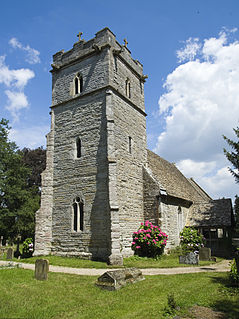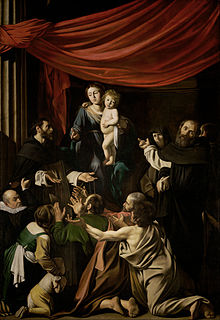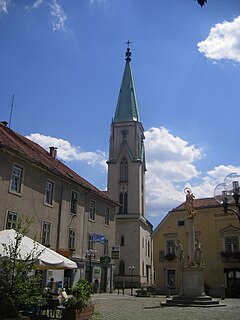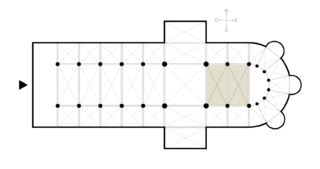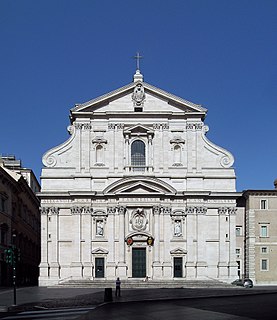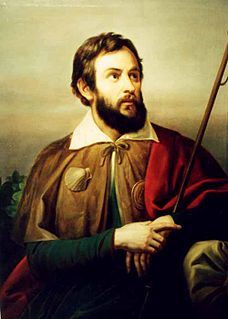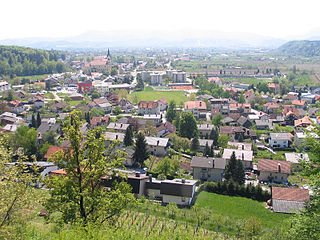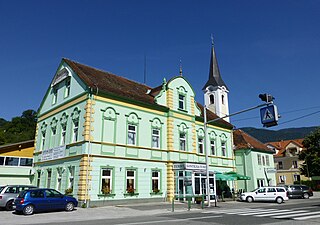Črešnjice | |
|---|---|
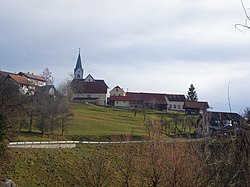 | |
| Coordinates: 46°19′34.81″N15°20′58.18″E / 46.3263361°N 15.3494944°E Coordinates: 46°19′34.81″N15°20′58.18″E / 46.3263361°N 15.3494944°E | |
| Country | |
| Traditional region | Styria |
| Statistical region | Savinja |
| Municipality | Vojnik |
| Area | |
| • Total | 1.62 km2 (0.63 sq mi) |
| Elevation | 512.3 m (1,680.8 ft) |
| Population (2002) | |
| • Total | 57 |
| [1] | |
Črešnjice (pronounced [ˈtʃɾeːʃnjitsɛ] ) is a settlement in the Municipality of Vojnik in eastern Slovenia. The area was traditionally part of the Styria region. It is now included with the rest of the municipality in the Savinja Statistical Region. [2]

The Municipality of Vojnik is a municipality in eastern Slovenia. The seat of the municipality is the town of Vojnik. Traditionally the area was part of the Styria region. The municipality is now included in the Savinja Statistical Region.

Slovenia, officially the Republic of Slovenia, is a sovereign state located in southern Central Europe at a crossroads of important European cultural and trade routes. It is bordered by Italy to the west, Austria to the north, Hungary to the northeast, Croatia to the southeast, and the Adriatic Sea to the southwest. It covers 20,273 square kilometers (7,827 sq mi) and has a population of 2.07 million. One of the successor states of the former Yugoslavia, Slovenia is a parliamentary republic and a member of the United Nations, of the European Union, and of NATO. The capital and largest city is Ljubljana.
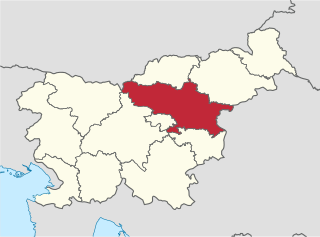
The Savinja Statistical Region is a statistical region in Slovenia. The largest town in the region is Celje. It is named after the Savinja River. The region is very diverse in natural geography; it mainly comprises the wooded mountainous terrain attractive to tourists, the fertile Lower Savinja Valley with good conditions for growing hops, the Kozje Hills, and the Velenje Basin with lignite deposits, used for electricity production. In 2013 the region invested more than EUR 127 million in environmental protection. In 2013, the region accounted for 14% of enterprises created and 8% of enterprises shut down. The region has good natural conditions for agriculture. In 2013 this region had more than 11,000 farms, which is 15% of all farms in Slovenia, ranking the region right behind the Drava Statistical Region. In agricultural area utilised and livestock, the region was also in second place. The region is a well-known and popular tourist destination. In 2012, tourist arrivals and overnight stays in the region represented 11.1% of all tourist arrivals in Slovenia and 15.0% of all overnight stays. On average, tourists spent four nights there.
Contents
The village stands on the local road from Stražica past Mount Konjice (Slovene : Konjiška gora) through Sojek, towards the Žiče Charterhouse, on the southern slope of the mountain, under Stolpnik peak.

Stražica is a settlement in the Municipality of Vojnik in eastern Slovenia. It lies in the hills northwest of Frankolovo off the main road from Vojnik to Slovenske Konjice. The area is part of the traditional region of Styria. It is now included with the rest of the municipality in the Savinja Statistical Region.

Slovene or Slovenian belongs to the group of South Slavic languages. It is spoken by approximately 2.5 million speakers worldwide, the majority of whom live in Slovenia. It is the first language of about 2.1 million Slovenian people and is one of the 24 official and working languages of the European Union.

The Žiče Charterhouse was a Carthusian monastery or Charterhouse in the narrow valley of Žičnica Creek, also known as Saint John the Baptist Valley after the church dedicated to St. John the Baptist at the monastery near the village of Žiče and at settlement Špitalič pri Slovenskih Konjicah in the Municipality of Slovenske Konjice in northeastern Slovenia.

